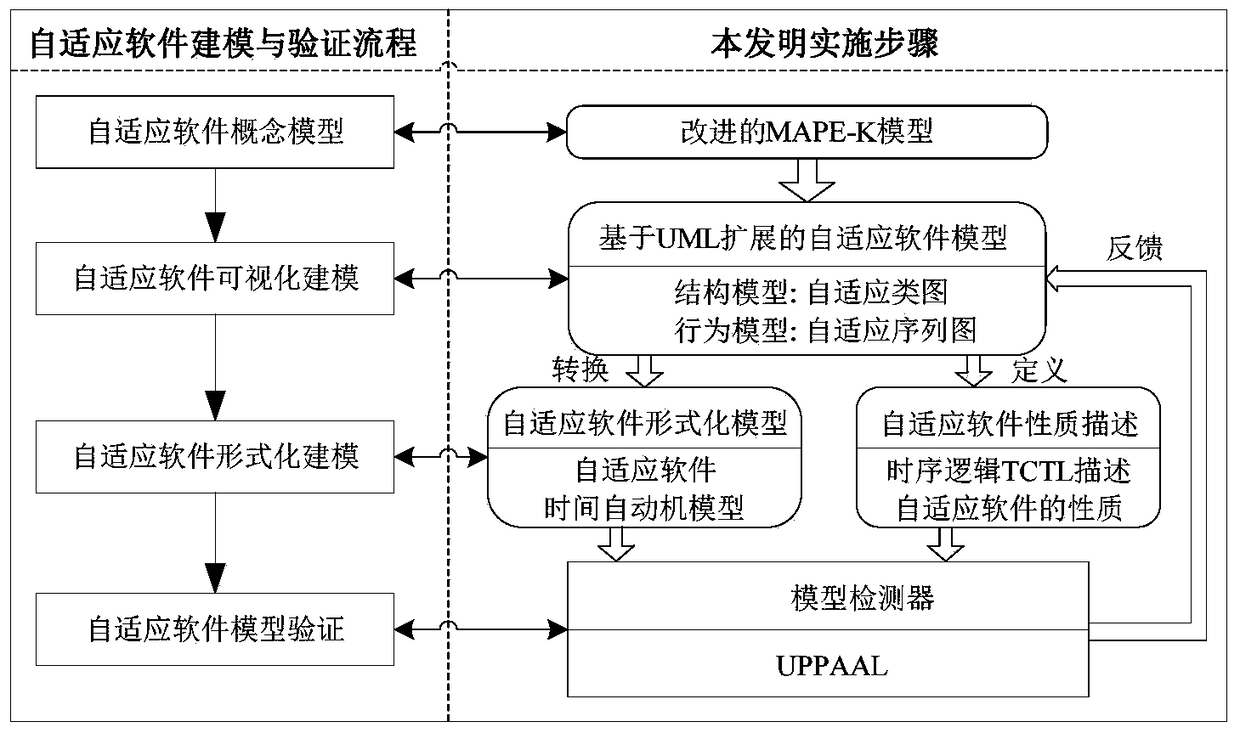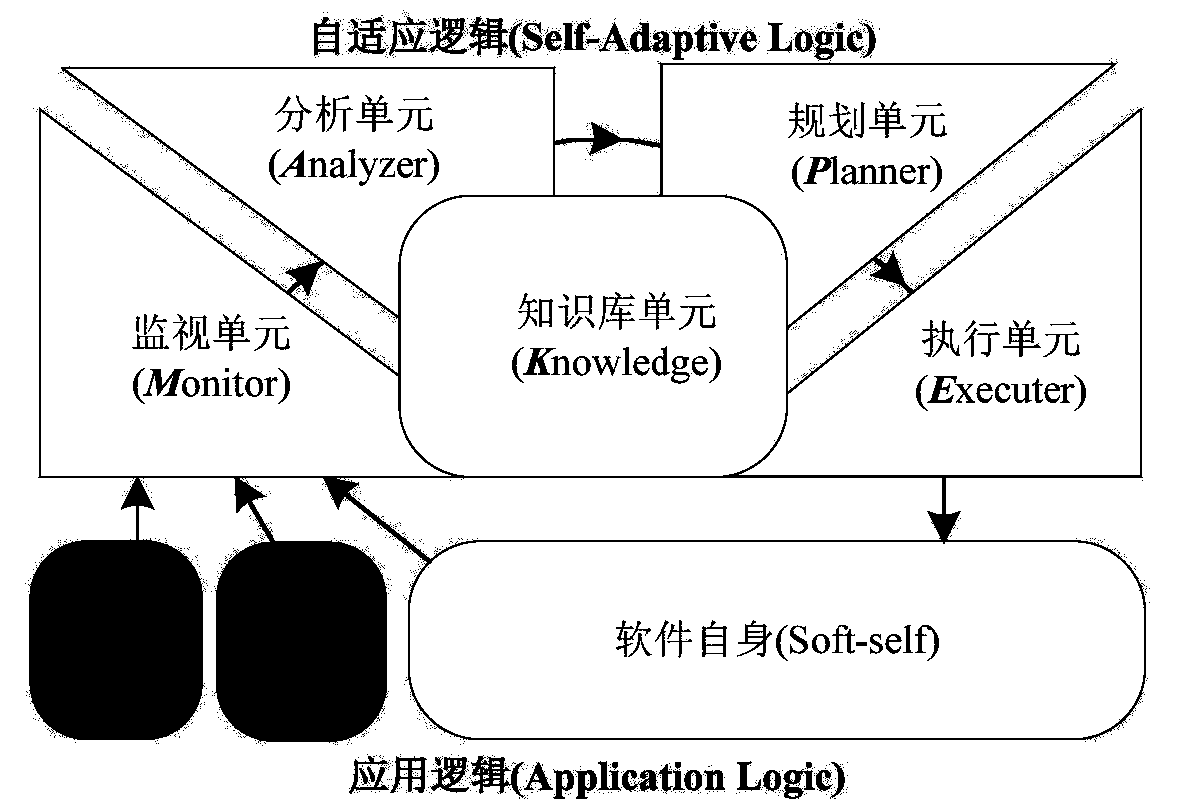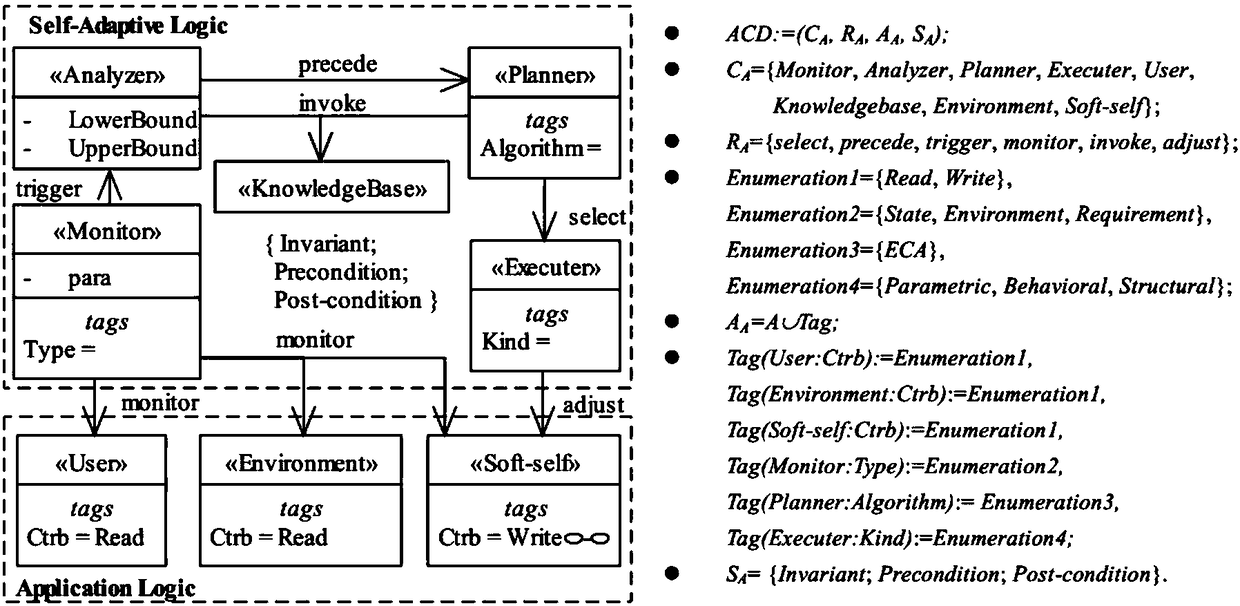An Adaptive Software UML Modeling and Its Formal Verification Method
A formal verification and self-adaptive technology, applied in software testing/debugging, program control devices, execution paradigms, etc., can solve the problems of immature research, difficulty in understanding and mastering, poor readability, etc., and achieve a high degree of visualization and improve Improvement of development efficiency and reliability
- Summary
- Abstract
- Description
- Claims
- Application Information
AI Technical Summary
Problems solved by technology
Method used
Image
Examples
Embodiment
[0062] Below in conjunction with embodiment the present invention is described in further detail:
[0063] Taking a simplified Web-based client / server system as an example, the implementation steps of the method of the present invention are set forth; ZNN.com is a Web-based client / server system, and its client is connected to the server pool Server Pool, and system maintenance personnel can Manually add or remove servers according to system load and user needs, and the client sends user needs to the server in real time, providing text (Textual) or multimedia (Multimedia) web page services. Due to the dynamic changes in client user visits, manually adjusting the size of the server pool can no longer adapt to frequent changes in the environment. Therefore, the software adaptive logic is constructed on the original software system to endow the system with adaptive capabilities;
[0064] Step 1. Guided by the improved MAPE-K software self-adaptive conceptual model, conduct d...
PUM
 Login to View More
Login to View More Abstract
Description
Claims
Application Information
 Login to View More
Login to View More - R&D
- Intellectual Property
- Life Sciences
- Materials
- Tech Scout
- Unparalleled Data Quality
- Higher Quality Content
- 60% Fewer Hallucinations
Browse by: Latest US Patents, China's latest patents, Technical Efficacy Thesaurus, Application Domain, Technology Topic, Popular Technical Reports.
© 2025 PatSnap. All rights reserved.Legal|Privacy policy|Modern Slavery Act Transparency Statement|Sitemap|About US| Contact US: help@patsnap.com



